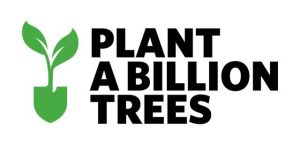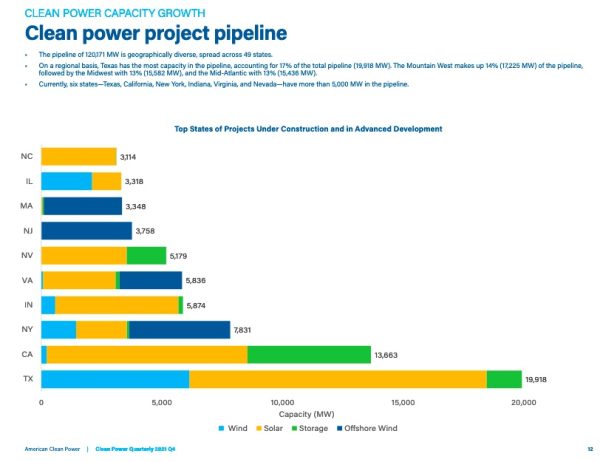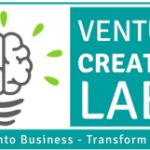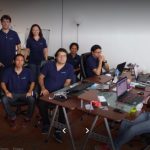Purpose Driven ‘Tecopreneur’ Opportunities on Route 176 in New Mexico and Texas

Purpose Driven ‘Tecopreneur’: A ‘tecopreneur’ is how I describe technically/scientifically knowledgeable entrepreneurs, who see the need for new ventures for creative and innovative ways to deal with major ecological challenges. A purpose driven ‘tecopreneur’ can see the big picture and take a systemic perspective to create profitable new ventures. Opportunities for the purpose driven ‘tecopreneur’ abound in the most unexpected places.
On return from visiting the Grand Canyon, I recently traveled more than 100 miles on Route 176 through Eastern New Mexico and West Texas—not a tourist road. It has a stream of trucks of workers (typically earning around $100K a year) involved in nuclear waste, oil and gas, solar & wind energy, water trucking, and civil engineering associated with those industries. The landscape is mainly desert scrub (dirt, mesquite and sagebrush), a few big cattle ranches, abandoned properties and a few small towns spaced far apart. It’s the Permian Basin, after all. Only 2% of the 30 million Texans live there, but it currently represents about 50% of all US oil production and about 15% of its natural gas.
My first reaction to the desert journey came from the juxtaposition of a oil and gas production, pipeline pumping units, a nuclear waste site (2,000 feet underground in a salt ‘mine’), methane gas flaring, hundreds of new wind turbines, solar power installations, abandoned nodding donkeys (aka oil pumpjacks), oil puddles where they should not be, and very dry land. My second was that no purpose driven ‘tecopreneur’ opportunities could exist there. It felt more like an opportunity only for State & Federal Government and the energy industry and its support services.
Purpose Driven ‘Tecopreneur’ Opportunities…and Risks
Now that I have had a while to reflect, the entrepreneur in me suspects that huge negatives offer abundant purpose driven ‘tecopreneur’ opportunities for dealing with abundant eco-problems and their socio-economic consequences. Given the scale of the issues, finance is likely to be an issue for startups, but there are more and more funding sources for sustainability focused ventures. Mission driven capital is available for both seed and venture capital. Risks are abundant, too. They are environmental, of course, but the interests of those who already operate there may conflict with a startup intending to shake things up. Political and local interests are intimately involved.
Hence a sensitive and savvy purpose driven ‘tecopreneur’ is the only kind that is likely to succeed in creating new ventures in the field of sustainability. A ‘techopreneur’ will create a purpose driven startups, because he primary motivation will be to meets the needs of the world first, while her profits will flow from meeting their purpose. If the focus was primarily on profits, she would be unlikely to have a real ‘teco’ impact. This article from the consulting firm Prosperah, on purpose driven startups and sustainability as a competitive advantage, demonstrates how this works.
Idle wells: quite apart from the complex environmental issues concerned with fracking there are many other ecological risks, known and unknown. Immediately visible to me, were those that stem from Texas and New Mexico having thousands of idle oil and gas wells. Of those, there are many thousands of “orphaned” wells that the states are now responsible for cleaning up. These wells typically become orphaned when the company that drilled, extracted and profited from them ceased to exist, or has declared bankruptcy. While the scrap steel value of the ‘dead’ rust-riddled nodding donkeys at a well head may run to several thousand dollars, the cleanup and plugging of the well will likely amount to between $40-60,000. In Texas alone, the potential cleanup costs for the orphaned wells is estimated to be $117 billion, a hefty price tag that comes with very limited direct return.
Being a total non-techie, what I do know is, that a purpose driven ‘tecopreneur’ has to be knowledgeable and experienced and very savvy about risk, but $117 billion is a very big number. The other skill needed for such an opportunity is creativity, possibly even more than science. Maybe a new kind of structure would be required for the business, perhaps a public/private partnership or profit/nonprofit collaborations. Issues of scale, price, and geo-politics would be as challenging as the technology itself.
Unproductive land and not many trees: hundreds of thousands of unproductive acres lie in the huge territory I traveled through. I’m no agronomist, but I have come across significant reforestation programs for eco-remediation. I first encountered it over nearly fifty years ago when my father’s tractor company supported an organization called Men of the Trees (now called the International Tree Foundation) to plant trees in the deserts of Kenya. On trip of discovery to Costa Rica, I learned that between a third and a half of its forests had been cleared by the late twentieth century. However, the country is now reforested to the point where more than 60% of its surface is forest—to protect watersheds, conserve biodiversity or capture carbon dioxide.
Reforestation is growing in Africa. For instance a safari company in Botswana has developed a tree nursery. ‘Tecopreneurs’—people and companies active in the tourism industry of South Africa have come together to enhance and create pristine forest ecosystems on selected sites in different parts of the Western Cape.
New Forests for Africa is a multi-stakeholder movement of forest plantation companies, financial institutions, governments, NGO’s and local communities who will actively set up projects and initiatives to boost reforestation with the focus on degraded land (purpose driven ‘tecopreneurs’, again). There are several issues that need attention: like education, awareness and availability of land. The key enabler for reforestation is access to finance. Funds need to become aware of the huge impact they will have when investing in forestry. Both of these schemes to meet purpose driven ‘tecopreneur’ opportunities in Africa may serve as useful models here in the US.
The Nature Conservancy has a campaign  to Plant a Billion Trees running in several countries, including the US. Sadly, not in the Permian Basin, at least not yet. The Conservancy is very active in other parts of Texas (the Texas 2021 Annual Report shows an income of more than $19m). The New Mexico branch of the Conservancy is active, but not in the Permian Basin either. In the next decade, The Nature Conservancy is working to protect ourselves and our planet by conserving 650 million hectares of healthy land, 30 million hectares of freshwater, and 4 billion hectares of oceans. The nonprofit would make a strong partner for a purpose driven ‘tecopreneur’ who has creative ideas for a new venture in the Permian Basin.
to Plant a Billion Trees running in several countries, including the US. Sadly, not in the Permian Basin, at least not yet. The Conservancy is very active in other parts of Texas (the Texas 2021 Annual Report shows an income of more than $19m). The New Mexico branch of the Conservancy is active, but not in the Permian Basin either. In the next decade, The Nature Conservancy is working to protect ourselves and our planet by conserving 650 million hectares of healthy land, 30 million hectares of freshwater, and 4 billion hectares of oceans. The nonprofit would make a strong partner for a purpose driven ‘tecopreneur’ who has creative ideas for a new venture in the Permian Basin.
Fresh and contaminated water: oil and gas fracking requires millions of gallons of water—upward of 20–30 million gallons in the Permian—sourcing freshwater for fracking is a major challenge for all operators in the region. In addition, treatment of used water is a enormous challenge. Wells and pipelines leak oil and produce contaminated water—an industry byproduct that’s often imbued with hazardous chemicals. The industry admits that 6% of oil & gas well casings fail immediately and more than 40% fail within 12 years. The challenge commands attention, especially given the fact that the Permian Basin is one of the most parched areas in the US. To my surprise, I learned that fracking companies are exempt from critical statutes in the Safe Drinking Water and Clean Water Act.
Bioremediation is also becoming developed to treat contaminated water, soil and subsurface material, by altering environmental conditions to stimulate growth of microorganisms and degrade pollutants such as oil and underground pipe leaks. The process of intrinsic bioremediation is mostly used in underground places like underground petroleum tanks.
There is already a water pipeline project by Palisade Pipeline which brings an uninterrupted source of non-potable, sustainable city reclaimed water to the Permian Basin to the benefit of agricultural growers, water utilities, other utilities, local communities/ domestic users.
If I were a purpose driven tecopreneur looking creative solutions, I might try to connect the dots between the community benefits of reforesting, the need for water and the way that trees can decontaminate soil. Through a process known as phytoremediation, green plants are used to remove, degrade, or stabilize pollutants and contaminants from soil or groundwater. The practice of using trees as waste cleanup tools has been around for many decades and its early promise as a low-cost alternative to other cleanup methods has borne out.
Renewable energy storage: given the intermittent source of renewable power generation (when the sun doesn’t shine or the winds drop), storage is a big problem on site, as well as at point of use. The National Renewable Energy Laboratory estimates that the potential exists to increase US renewable energy storage capacity by as much as 3,000 percent by 2050. One storage possibility is pumped hydro that involves pumping water uphill at times of low energy demand; the water is stored in a reservoir and, in periods of high demand, released through turbines to create electricity. Maybe there’s a link with desert water issues. Given the vast land tracts, a purpose driven tecopreneur might be able to develop in-ground thermal energy storage. Also given all that available space, there may be purpose driven ‘tecopreneur’ opportunities in compressed air energy storage that involves storing pressurized air or gas and then heating and expanding it in a turbine to generate power when this is needed.
Finance and ownership: more than 80% of Permian Basin production is fueled by debt finance and a lengthy decline in the price of oil would likely have producers reducing their commitments and activities. A prolonged price decline might herald new bankruptcies and mergers operating in the Basin, so the oil and gas situation is itself uncertain. Indeed in 2022, Bloomberg reported ConocoPhillips, one of the biggest operators is considering selling Permian assets worth over a $1 billion. Hence the region’s economic stability is open to question, quite apart from the ecological issues in doubt: purpose driven tecopreneur opportunities exist in finance and funding, too.
Creating community and livelihood: man camps, oil field housing, barracks, single-wide trailer housing, and RVs are forms of accommodation that prevail along Route 176. There are virtually no chain hotels and motels like there are in the oil and gas cities such as Carlsbad, Midland and Odessa. None of the ‘on site’ accommodations are attractive, nor healthy, nor offer long term housing solutions. Even if the energy industries have long term anxieties, neither fossil fuel, nor renewable energy industries are going to desert the desert for a long time.
Creating permanent, rather than a transient community, a macro view is going to be needed, provided that healthy conditions can be established. The long term view will require that a vibrant community can be created, with positive conditions for living, learning, working and playing. The infrastructure is not there now, nor is there any intention to create it. There is very little agriculture or trade in the Basin and environmental conditions are not supportive. But there remains opportunity despite the adverse conditions. Finding solutions will require entrepreneurial creativity.
International opportunity: difficult though it may be, there must be more opportunities for US/Mexico oil and natural gas cooperation, beyond pipelines. The Permian Basin does not stop at the international border, nor does environmental damage: purpose driven techopreneur opportunities may be open for cross-border collaboration.
A visit to Route 176 is likely to spawn purpose driven ‘tecopreneur’ opportunities: I don’t have ready-made business plans or any other magic ways to satisfy the opportunities and meet the needs—that’s what entrepreneurs do and it’s what characterizes their very nature. Which came first, the chicken or the egg? America’s famous Route 66 shortened east—west travel, but once established, then needs became established: for gasoline to keep moving, satisfied by stations like the one illustrated above; trade and refreshment; sleeping arrangements. Route 66 symbolized economic and social optimism post WWII, especially in the growing affluence of the mid-late 1950s. Perhaps Route 176 can stimulate a great economic and social enthusiasm for ecological transformation in the mid-late 2020s.
Clean or Dirty?
I was curious to know if fossil energy was still the future of my former home State of Texas. When I took a look, the American Clean Energy Association came to my rescue with the chart below.
 Anyone who does remain unsure about the stress we all put on the environment, should take a look for themselves by traveling Route 176 from Carlsbad, NM to Big Spring, TX and judge for themselves.
Anyone who does remain unsure about the stress we all put on the environment, should take a look for themselves by traveling Route 176 from Carlsbad, NM to Big Spring, TX and judge for themselves.
It looks like Texas lags behind on the critical area of clean energy storage, but I’d bet that the State’s purpose driven ‘tecopreneurs’ do not have their eyes closed to the opportunities that all that clean power generation implies.
In a Kiplinger article back in 2019, Michael Kahn suggested, “Jobs in industries that would be restricted or eliminated, such as oil and gas drillers and refiners, would disappear unless they’re easily adaptable to new green-energy industries”.
In Texas, though not in the Permian Basin, a California company, Iron Ox, is using an artificial intelligence system, machine learning, robotics and hydroponics to make the agriculture sector more efficient and robust, while decreasing greenhouse gas emissions and other negative environmental impacts. Its technology produces a wide variety of crops, including herbs and lettuces, while using a small fraction of the land, water (90% less than field farms) and energy (75% less) compared to food grown on conventional farms. Hey, Permian ranchers, what say you?
West Texas cattlemen may do well to heed the forecast that “by 2030, the number of cows in the U.S. will have fallen by 50% and the cattle farming industry will be all but bankrupt. All other livestock industries will suffer a similar fate, while the knock-on effects for crop farmers and businesses throughout the value chain will be severe,” according to the report from San Francisco-based RethinkX. Nonetheless, one bankrupt industry will open up opportunities like the one spotted by Iron Ox.

Support Ukraine






